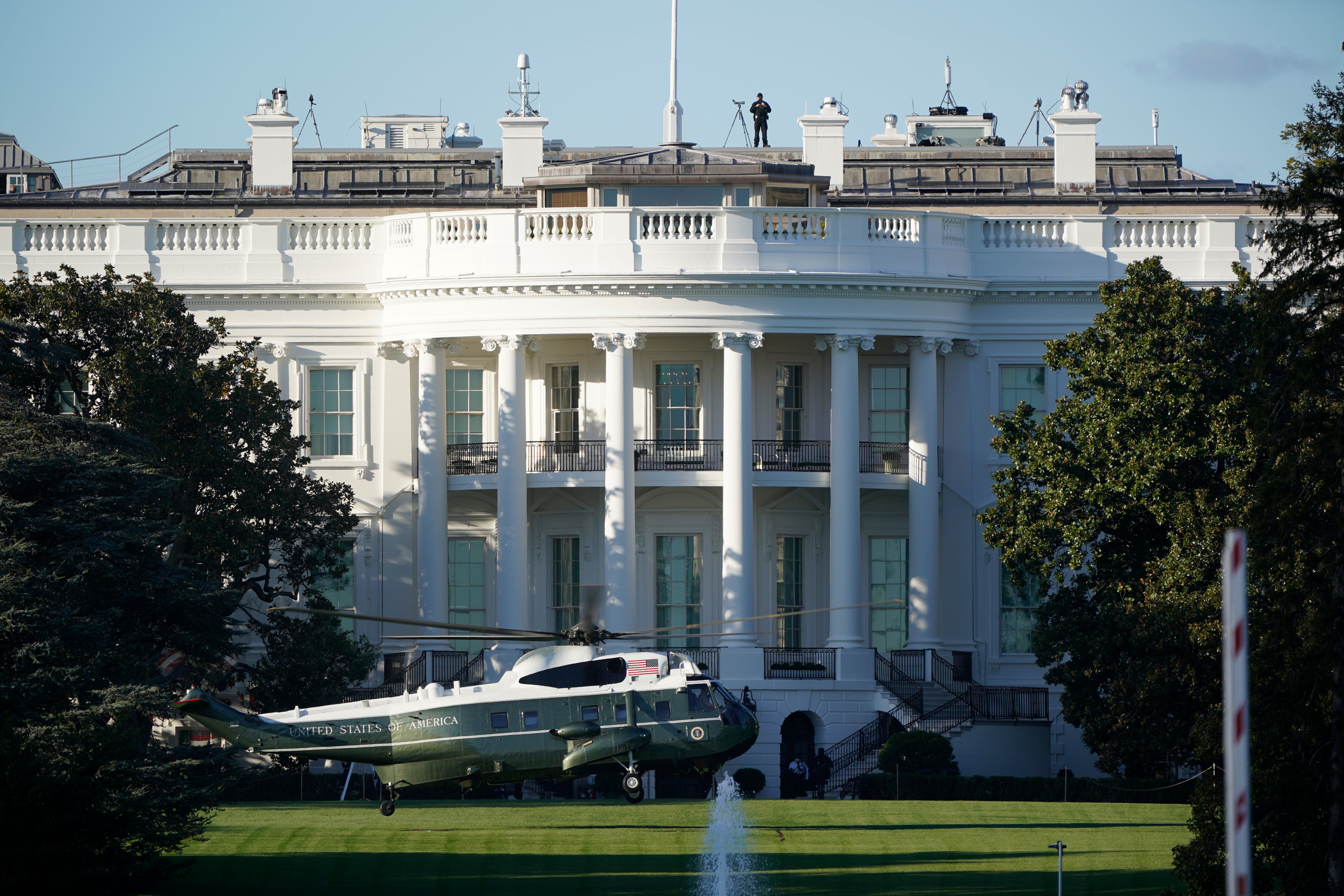AP Explains: Transfer of power under 25th Amendment
With President Donald Trump's announcement that he has been diagnosed with the coronavirus, questions are being asked about how presidential power could be transferred, either temporarily or more permanently

Your support helps us to tell the story
From reproductive rights to climate change to Big Tech, The Independent is on the ground when the story is developing. Whether it's investigating the financials of Elon Musk's pro-Trump PAC or producing our latest documentary, 'The A Word', which shines a light on the American women fighting for reproductive rights, we know how important it is to parse out the facts from the messaging.
At such a critical moment in US history, we need reporters on the ground. Your donation allows us to keep sending journalists to speak to both sides of the story.
The Independent is trusted by Americans across the entire political spectrum. And unlike many other quality news outlets, we choose not to lock Americans out of our reporting and analysis with paywalls. We believe quality journalism should be available to everyone, paid for by those who can afford it.
Your support makes all the difference.President Donald Trump announced early Friday on Twitter that he has been diagnosed with the coronavirus, and he will spend several days at Walter Reed Medical Center for treatment and evaluation.
The 25th Amendment provides some answers about how presidential power could be transferred either temporarily or more permanently. Trump has not invoked the amendment in this case. In fact, the White House said he will continue to work from an office set up for him at the hospital.
Here are some questions and answers about the amendment.
WHY WAS IT PASSED?
The push for an amendment detailing presidential succession plans followed the assassination of President John F. Kennedy in 1963. President Lyndon B. Johnson in his 1965 State of the Union promised to “propose laws to insure the necessary continuity of leadership should the President become disabled or die.” The amendment was passed by Congress that year and ultimately ratified in 1967.
HAS IT BEEN INVOKED TO TRANSFER POWER BEFORE?
Yes, presidents have temporarily relinquished power but not all invoked the 25th Amendment. Previous transfers of power have generally been brief and happened when the president was undergoing a medical procedure.
In 2002, President George W. Bush became the first to use the amendment's Section 3 to temporarily transfer power, to Vice President Dick Cheney while Bush was anesthetized for a colonoscopy. Bush temporarily transferred power in 2007 to undergo another colonoscopy.
WHAT ABOUT RONALD REAGAN?
The 25th Amendment was never invoked after President Ronald Reagan was shot in 1981. Reagan did temporarily transfer power to Vice President George H. W. Bush while undergoing surgery to remove a polyp from his colon in 1985, but he said at the time he wasn't formally invoking the 25th Amendment. While he said he was “mindful” of it, he didn't believe “that the drafters of this Amendment intended its application to situations such as the instant one.” Bush was acting president for eight hours according to a book on the amendment by John D. Feerick.
HOW DOES IT WORK?
To temporarily transfer power to the vice president, a president sends a letter to the Speaker of the House of Representatives and President pro tempore of the Senate that he is “unable to discharge the powers and duties of his office.” The vice president then becomes acting president. When the president is ready to resume authority, the president sends another letter. That's spelled out in the amendment's Section 3.
The next section of the amendment, Section 4, lays out what happens if the president becomes unable to discharge his duties but doesn't transfer power. In that case, the vice president and majority of the Cabinet can declare the president unfit. They'd then send a letter to the Speaker and President Pro Tempore saying so. The vice president then becomes acting president.
If the president ultimately becomes ready to resume his duties, the president can send a letter saying so. But if the vice president and majority of the Cabinet disagree they can send a letter to Congress within four days. Congress would then have to vote. The president resumes his duties unless both houses of Congress by a two thirds vote say he's not ready. The section has never been invoked.